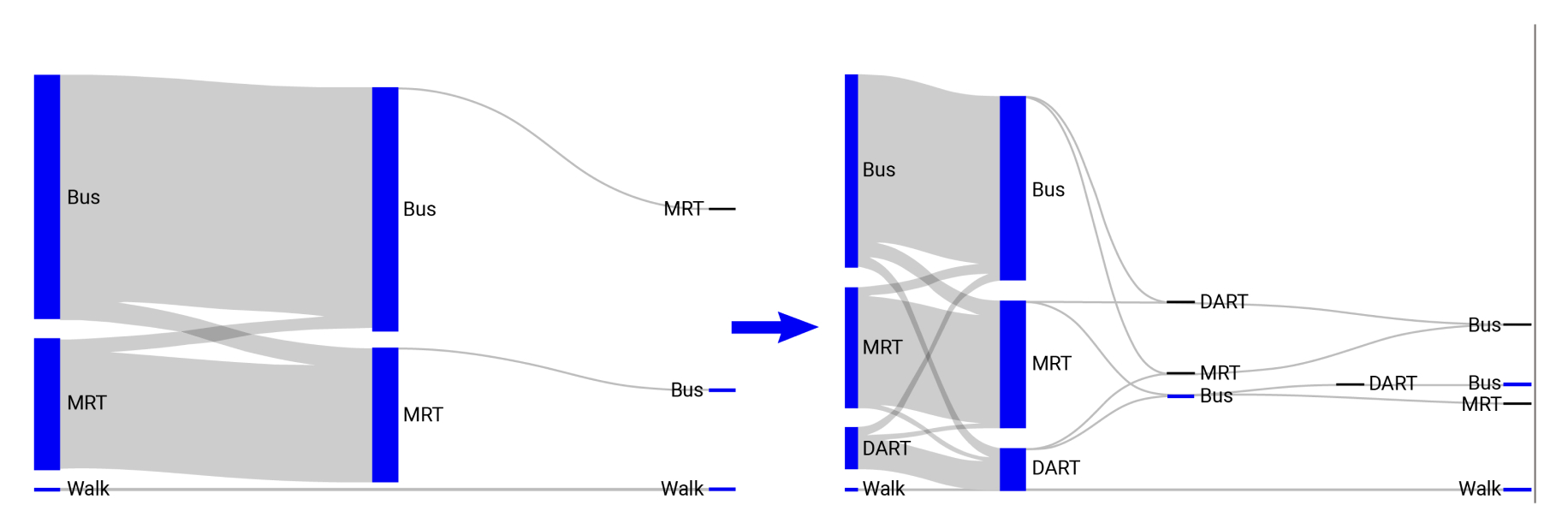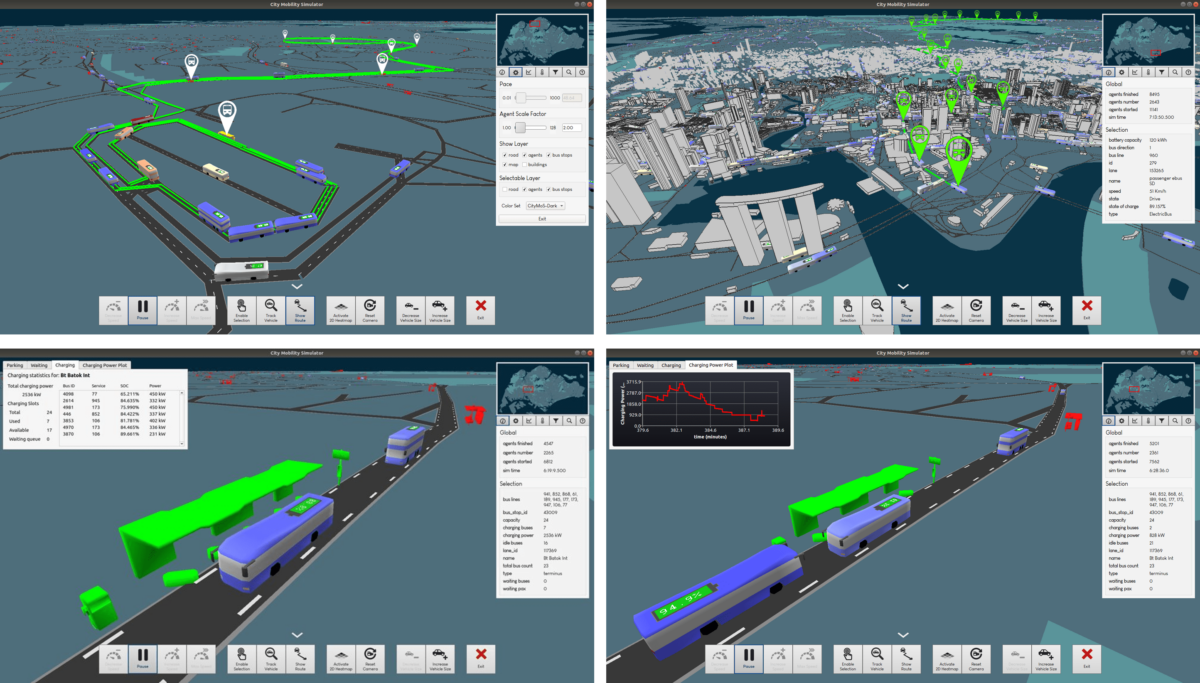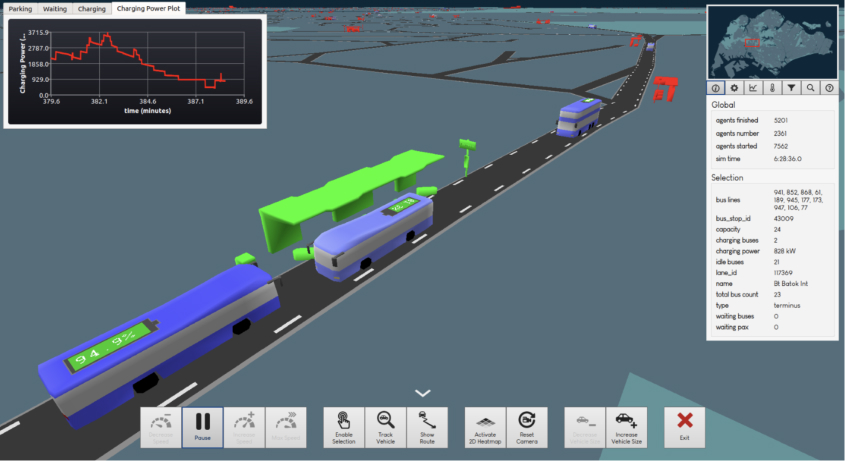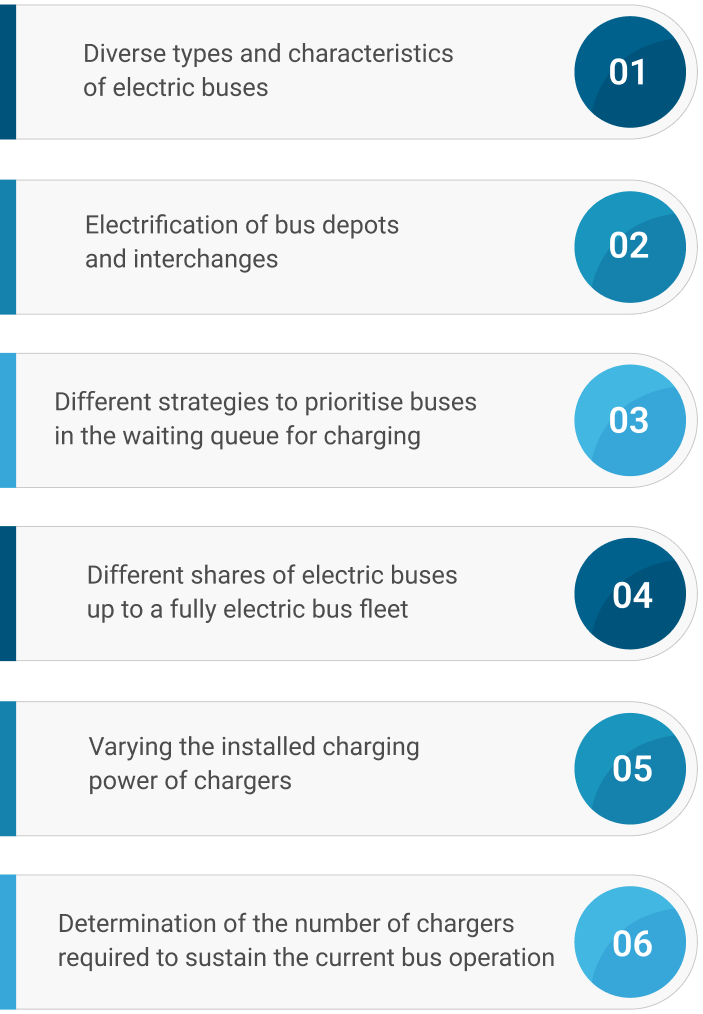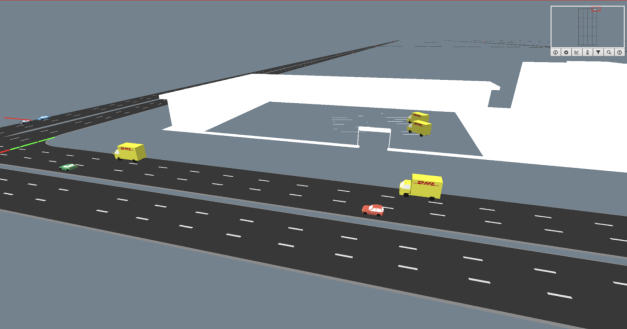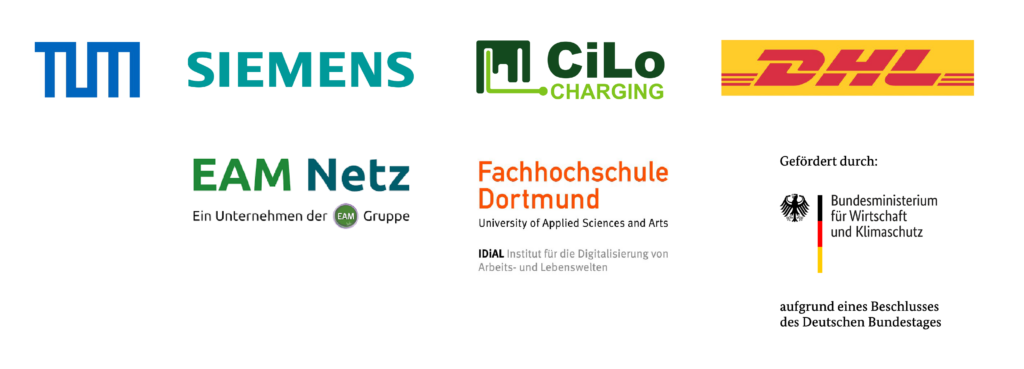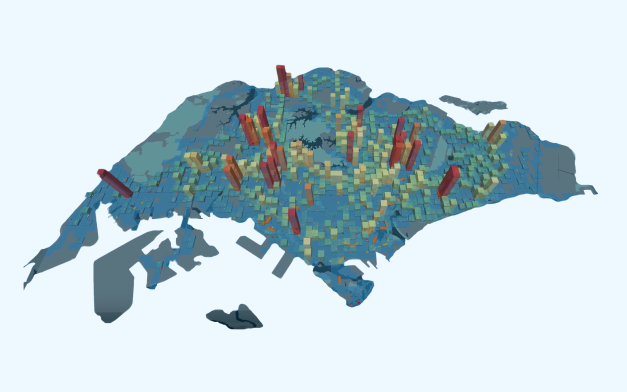Electric and Autonomous
Shuttle Buses
Using CityMoS to study the impact and optimize the deployment
of new modes of public transport
- Case Studies
- Holistic Transport System Evaluation & Exploration
- Dynamic Autonomous Road Transit
Electric Autonomous Shuttle Buses
With CityMoS, cities and operators can now accurately evaluate and support the integration of autonomous shuttle buses into their transportation systems.
Autonomous shuttle buses represent the future of public transit, offering sustainable, efficient, and accessible mobility solutions. But integrating them seamlessly into existing infrastructure requires meticulous planning and evaluation.
That’s where CityMoS, the City Mobility Simulator, comes in. Our software enables city planners, transportation authorities, and operators to simulate various scenarios, assessing factors like shuttle and terminal configuration, route optimization, traffic flow, passenger demand, as well as safety and comfort considerations.
View the video on the left for more insights and to see TUMCREATE’s DART model in action in CityMoS. Below find a testimonial from our project partner as well as an example of what we have evaluated for the deployment of a shuttle bus in Singapore.

„CityMoS helped us to optimize the operational KPIs of autonomous electric vehicle fleets in public transport systems. Its capabilities are unique in the market, offering a wide variety of functionality from microscopic to macroscopic transport planning tasks. It is easy to use and facilitates insightful conclusion through comprehensive reporting.“, Emma Nagel, ZF Friedrichshafen AG CAE Engineer
Study of Large-Scale Transport Systems
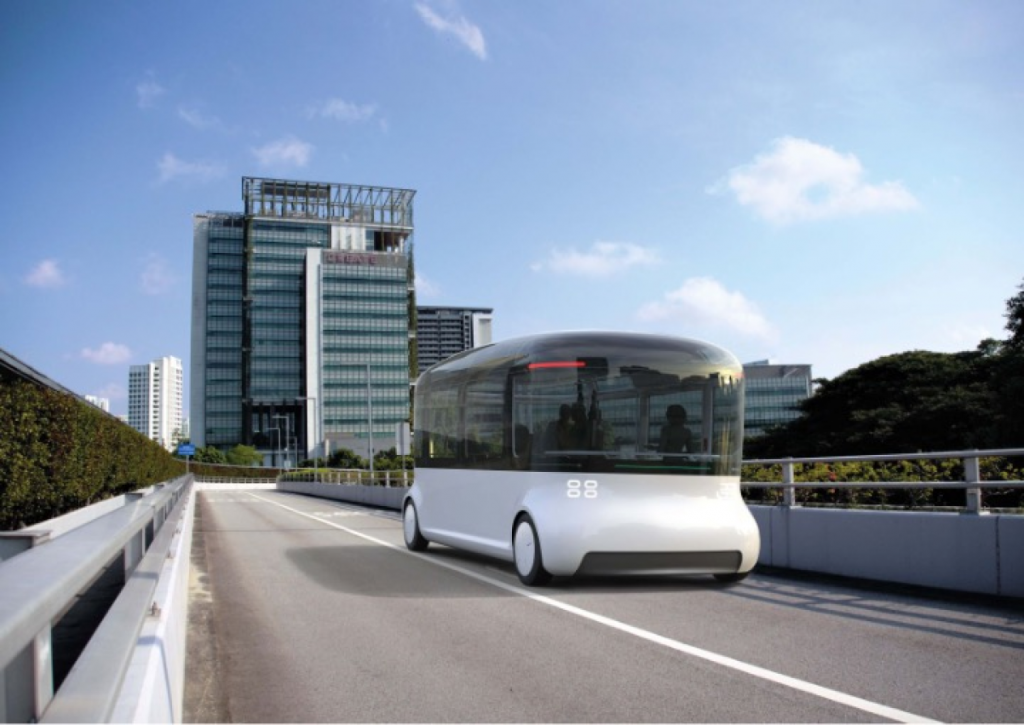
Large-Scale
Transport Systems
With a growing urban population and an increasing demand in public transport, research into novel public transport solutions becomes increasingly important. Simulation studies can offer an insight into the performance, bottlenecks, and potentials of the public transport system and act as an enabler to improve the efficiency and thereby the passenger experience. With CityMoS, we present a novel methodology for the modelling and simulation of large-scale public transport systems, including passenger assignment, routing, as well as bus and train operation. Contrary to related work in the field, we utilize high-performance parallel computing to follow a microscopic approach, simulating each passenger and vehicle individually to provide more flexibility in the decision-making process.
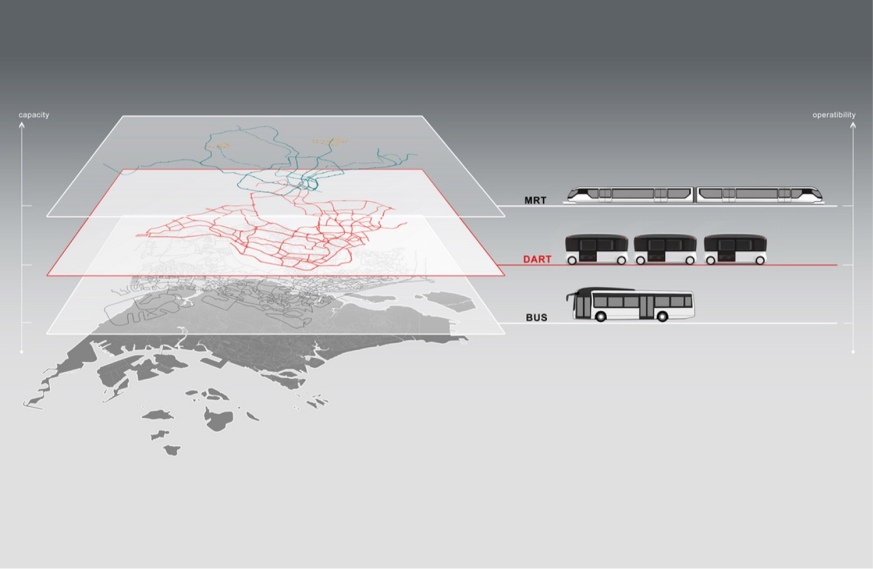
Process
The selected area highlights the deployment area for the DART system. We modelled this area in detail in CityMoS, including existing bus lines, the mass rapid transit network as well as the proposed DART corridors. Entry and exit points to the target area (highlighted in triangles) were modelled to carry all passenger demand expected to enter and exit the area. Passenger demand was modelled on a zonal basis and mode assignment was carried out during run-time.
We modelled the entire public transport network in the form of a directed graph where nodes represent bus stops, platforms, MRT stations, etc and edges denote connectivity with an assigned travel time. We created 98 of these graphs to capture how connections change over time, with each graph occupying around 2.5mb of memory. With the help of contraction hierarchies, each query only took a few microseconds to execute, allowing us to simulate behaviour and preferences for every single commuter.
We modelled the entire public transport network in the form of a directed graph where nodes represent bus stops, platforms, MRT stations, etc and edges denote connectivity with an assigned travel time. We created 98 of these graphs to capture how connections change over time, with each graph occupying around 2.5mb of memory. With the help of contraction hierarchies, each query only took a few microseconds to execute, allowing us to simulate behaviour and preferences for every single commuter.
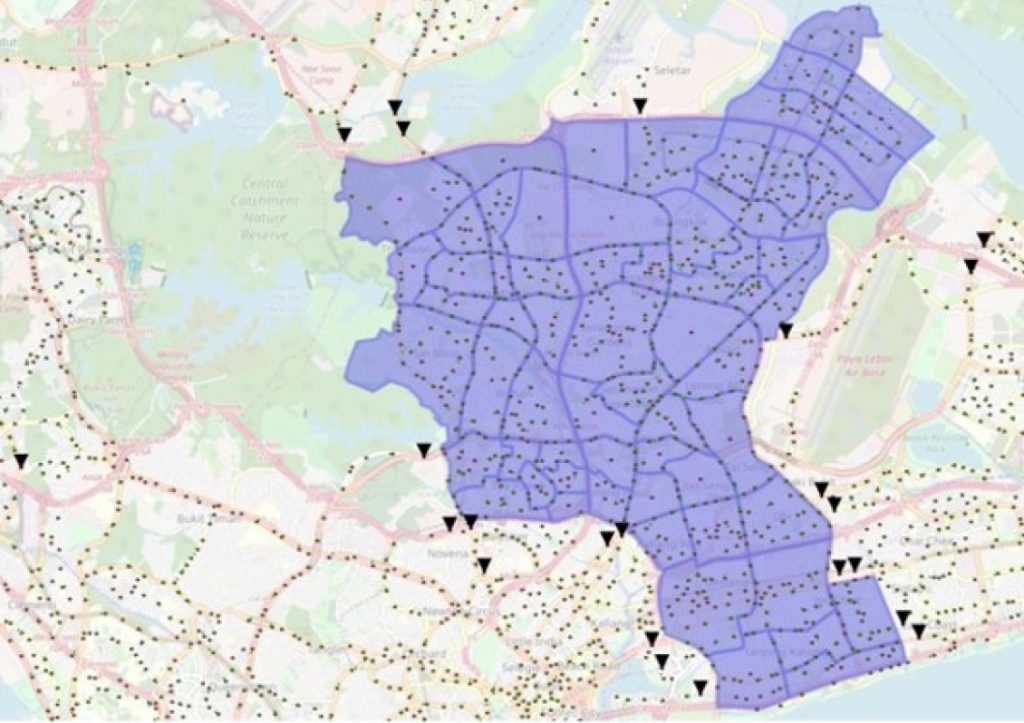
Outcomes
CityMoS provided insights into passenger choices as well as the performance of the system. Furthermore, we investigated how experiences made by passengers affect their next choices and how those would impact the transportation system. Our simulation study supported the original hypothesis that DART can alleviate bus crowding and improve commute times for passengers.
For more information on the DART system, please visit
A publication of our findings will follow.

